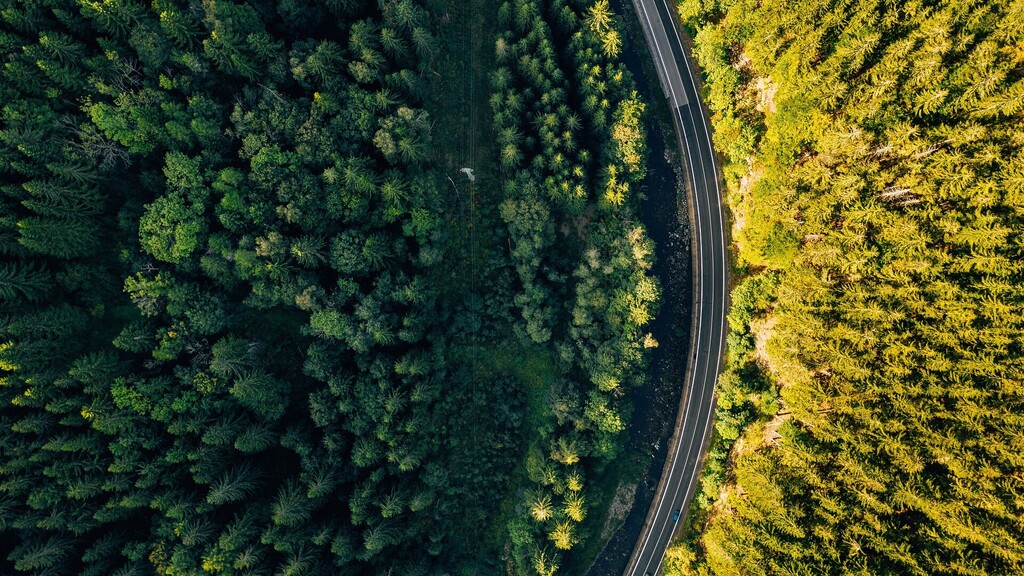

The habitats of many animal and plant species are reduced in size, fragmented and isolated by transport routes and elements that fragment the landscape. This fragmentation is considered to be a major cause of the decline in species and the threat to biodiversity.
Habitat separation, also known as habitat fragmentation, is a process of environmental change that has a decisive influence on evolution and biodiversity. It involves splitting up the habitat of animal or plant species, with the result that genetic exchange between the resulting sub-habitats is prevented. The isolation of continental habitats or their fragmentation leads to a reduction in the size of habitats and an increasing isolation of species. The fragmentation and loss of habitats increases the extinction rate and is one of the main causes of the loss of local, regional and global biodiversity.
Habitat separation is caused on the one hand by geological or climatic processes such as rift valleys or glaciation, and on the other hand by human activities such as deforestation or road construction. The climatic-geological processes that cause the isolation of subpopulations over a long period of time are considered to be decisive conditions for the formation of species and for all extinction processes. These processes can occur once (such as mega-floods or mega-volcanic eruptions), repeatedly or dynamically alternating. The changes caused by human influences usually occur much faster. They must be considered as the cause of the extinction of many species.
The separation process of land areas usually follows the same steps: perforation, dissection, fragmentation, reduction and shrinkage. Perforation and fragmentation often occur in the early stages of land development. For example, the clearing of uncultivated land for the construction of houses (perforation) or roads (fragmentation) interrupts an otherwise continuous habitat. Repeated perforation or fragmentation of habitats, or a combination of both, leads to increasing habitat fragmentation. Reduction and shrinkage follow, i.e. development spreads until the remaining undeveloped areas become smaller or disappear completely.
Fragmented land consists of edge and interior spaces. The edges of fragmented habitats are particularly susceptible to environmental disturbances such as storms. Species usually only have optimal living conditions at a certain distance from the edge of their habitat, depending on their area of action. Habitat separation disproportionately reduces the "more valuable" inner areas and may even cause them to disappear completely. In addition, small fragments promote lower species diversity because some species simply need large habitats and small, isolated populations are not able to survive in the long term. When a habitat is highly fragmented, the risk of species extinction increases as native species lose access to suitable habitats. This risk is exacerbated if a species is unable to travel between parts of the country and gene flow is restricted.
The effects of fragmentation on butterflies and flowering plants were analysed in a dissertation at the University of Göttingen. Different species, e.g. habitat specialists and generalists, react differently to changes in the cultural landscape. The effects of habitat fragmentation on immigration, extinction and turnover of butterfly communities showed that habitat specialists had higher extinction rates and were more affected by habitat loss than generalists. Habitat isolation had no significant impact on immigration, extinction and turnover. Species numbers of butterflies and flowering plants were lower in small habitat patches than in large patches, with butterfly specialists more affected by habitat loss than generalists. The generalist butterflies were positively affected by a more diverse landscape structure, while isolation had no effect on butterflies or plants.
Reconnecting fragmented habitats helps to mitigate the effects of habitat fragmentation. Stepping stones connect habitats by creating small patches of suitable habitat between larger habitat areas. For example, strictly protected nature reserves provide species with a safe environment in which they can thrive without further human activity. Corridors connect habitat areas with each other. This allows species to move between habitats. However, there are minimum requirements regarding the minimum width of a corridor.
Discover active projects here!
Sources:
</p">Share now: